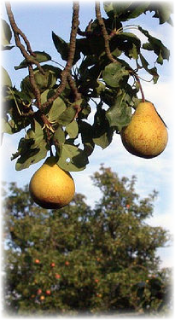What’s different about perry?
Although the process of making perry is similar to that of cider, there are differences that should be taken into account. This makes creating a decent perry a more precarious job the creating a decent cider.
To start off with, choice of fruit is more limited. This means that unless you have access to perry pear varieties you are more than likely to produce indifferent perry. The fruit is also more variable, with some types rock hard and others extremely soft – and it is harder to tell if a pear is ready to press this requires more trial and error than cider.
Secondly, because of the make up of pears, some varieties (e.g. Butt) need to be macerated for a while after milling before pressing. This makes the fruit produce a more stable fermentation and reduces high tannin levels. This does not apply to all pears though - Blakeney Red, for example, does not require any maceration and some varieties will dissolve into a slush that is difficult to press.
However, apart from these differences (and the fact that perry is naturally a sweeter drink if simply left to ferment), perry is as refreshing and satisfying as cider.
Oh, and don’t be confused with the latest ‘pear cider’ fad – perry is the same thing. Whilst not a guarantee, most full juice crafted perry's are exactly that. Most perry's that are labelled 'pear cider' are in fact subject to similar industrialised processes (chapitalisation etc.) that mainstream cider (or even 'apple cider') are made up of - designed to be cheap and quick to produce for mass consumption.
There is much less information available on the topic of creating a craft perry, however, we are trying to balance this out a bit at the Cider Workshop. If you have anything you want to contribute on perry, we would be most glad to receive it.


